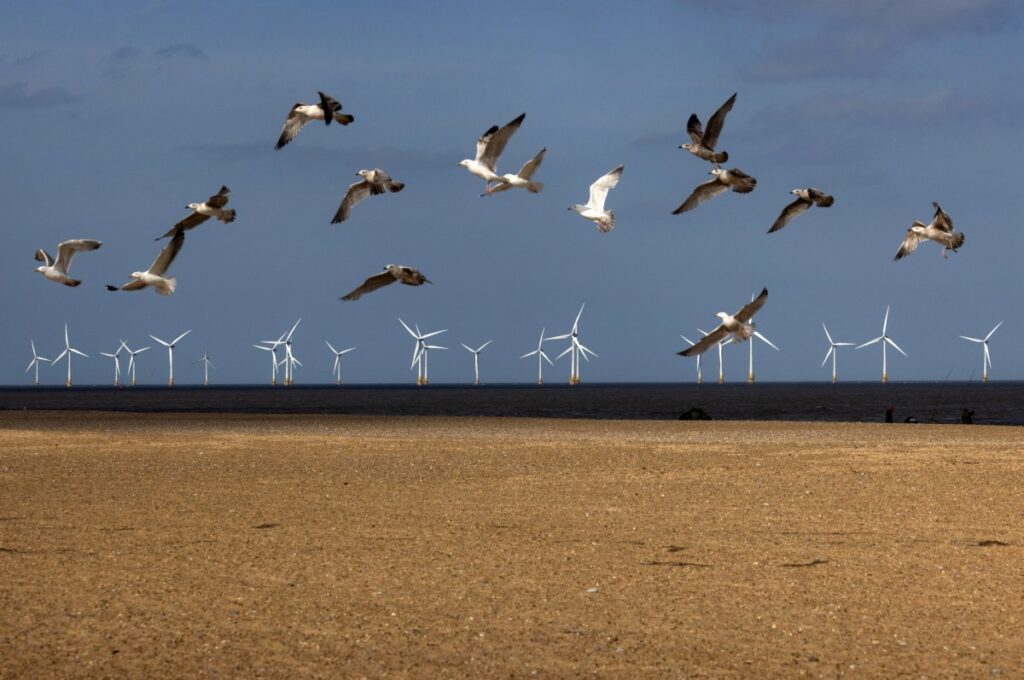Wind is the largest source of renewable energy in the U.S., according to the U.S. Energy Information Administration, but wind farms come with an environmental cost as wind turbines can wreak havoc on bird populations. Meet Spoor, the startup using AI to help wind farms mitigate that risk.
Spoor is a software that uses machine learning to detect birds on video while also recording their movement and predicting their flight patterns. Spoor co-founder, and CEO, Ask Helseth told TechCrunch that government regulations in several countries require wind farms to monitor and track their impacts on birds, especially in areas with endangered species, but prior to AI-enabled computer vision, there wasn’t a good way to do that.
“The expectations from the regulators are growing but the industry doesn’t have a great tool,” Helseth said. “A lot of people [go out] in the field with binoculars and trained dogs to find out how many birds are colliding with the turbines.”
Spoor’s system of continuously monitoring sites offers a large improvement, Helseth said. Existing wind farms can use the data to better react to bird migration patterns and can slow or even stop wind turbines when avian activity is expected to be heightened. Companies can also use the tech to monitor potential sites for wind farms and evaluate their risk to the local avian populations.
“Wind farms are quite huge, many hundred square kilometers, and trying to use computer vision to basically monitor the air is an interesting technology challenge,” Helseth said. “We needed to create a scalable technology that can detect birds. It’s kind of a novel use of computer vision and our own data pipeline.”
The Oslo, Norway-based company just raised a $4 million seed round from investors including Futurum Ventures, Nysnø, and biodiversity-focused VC Superorganism. The round also included Ørsted Ventures, the venture arm of Ørsted, one of the world’s largest offshore wind farm companies.
Helseth said that they fielded inbound interest from more than 100 investors for the seed round and were very strategic with who they decided to work with. Superorganism was the only firm they reached out to. Kevin Webb, a co-founder and managing director at Superorganism, said the firm had been tracking Spoor for a while and got excited about the investment because Spoor perfectly fits Superorganism’s thesis of backing companies that help the planet get to zero emissions without harming nature or biodiversity in the process.
“We saw them very early on and in the time that we have known them they have started working with the largest wind farm developers on the planet,” Webb told TechCrunch. “Ask and his team have hired incredibly well. We were frankly blown away by the progress they had made in building out the team.”
Spoor getting its start in Norway was a helpful factor in the company’s progress as Norway has an advanced wind farm program. Plus, Europe has a stronger adoption of wind energy compared to the U.S., Helseth said. But the company has its eye set on expanding into the U.S. which should be a windfall of its own.
The U.S. government has an aggressive goal of reaching 30 gigawatts of offshore wind capacity by 2030, which offers a strong opportunity for companies like Spoor. Any company that wants to set up a wind farm in the U.S. has to comply with guidelines from the U.S. Fish and Wildlife Service and make sure that their wind farms don’t violate legislation like the Endangered Species Act or the Migratory Bird Treaty Act. Regulators are particularly strict in the U.S. about how wind turbines could impact American Bald Eagle populations. Helseth added that he’s seen wind farms get delayed or not built at all because of issues they run into related to native bird populations.
Spoor isn’t the only one using AI machine vision to solve the problem. Others include Woolnorth Renewables and Robin Radar.
Still, Helseth hopes Spoor can help break up some of those bottlenecks and be a growing, positive factor in moving the industry forward.
“We are still a small company, per say, but we have interest from around the world, the industry is hungry for our solutions,” Helseth said.


